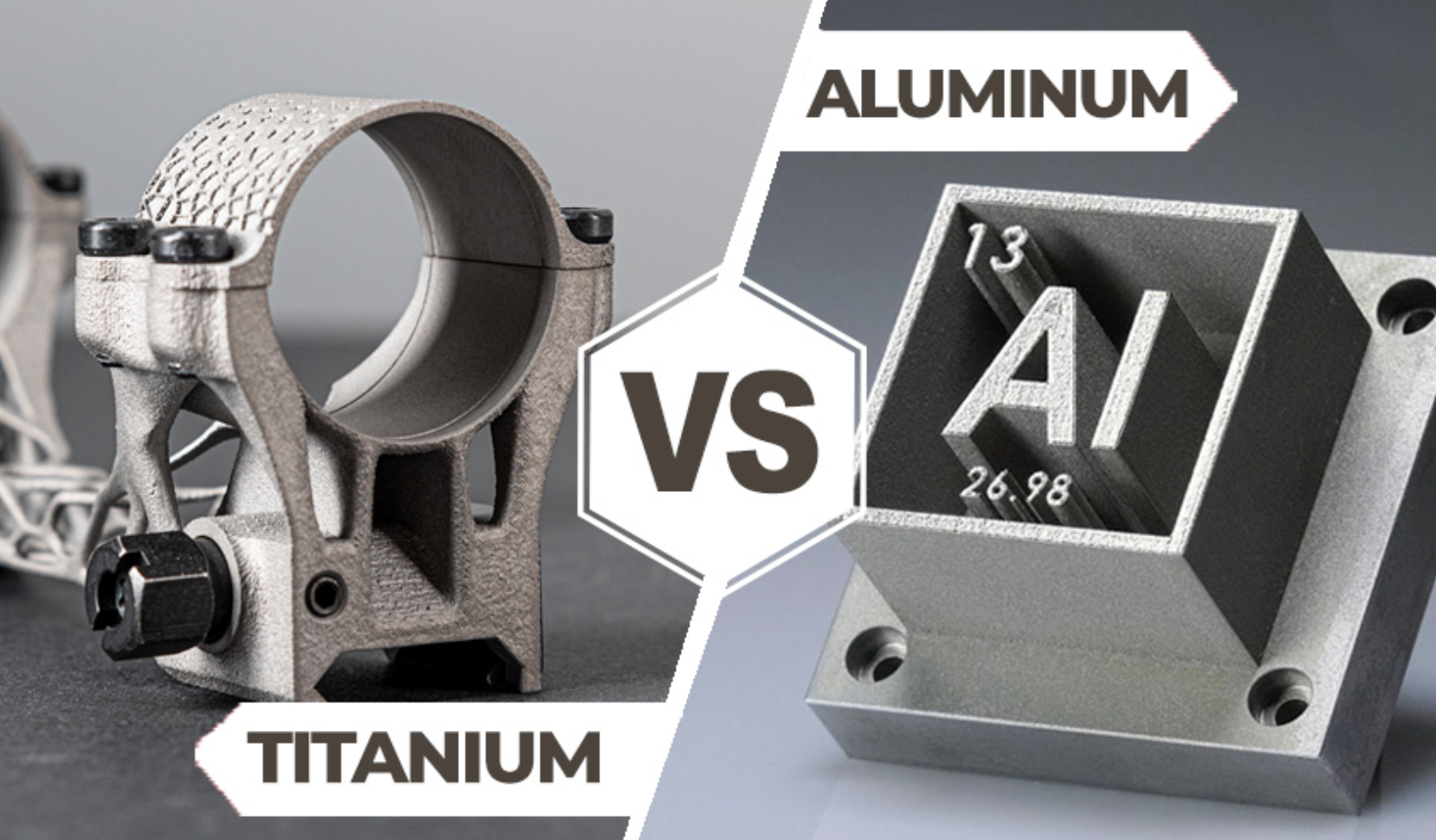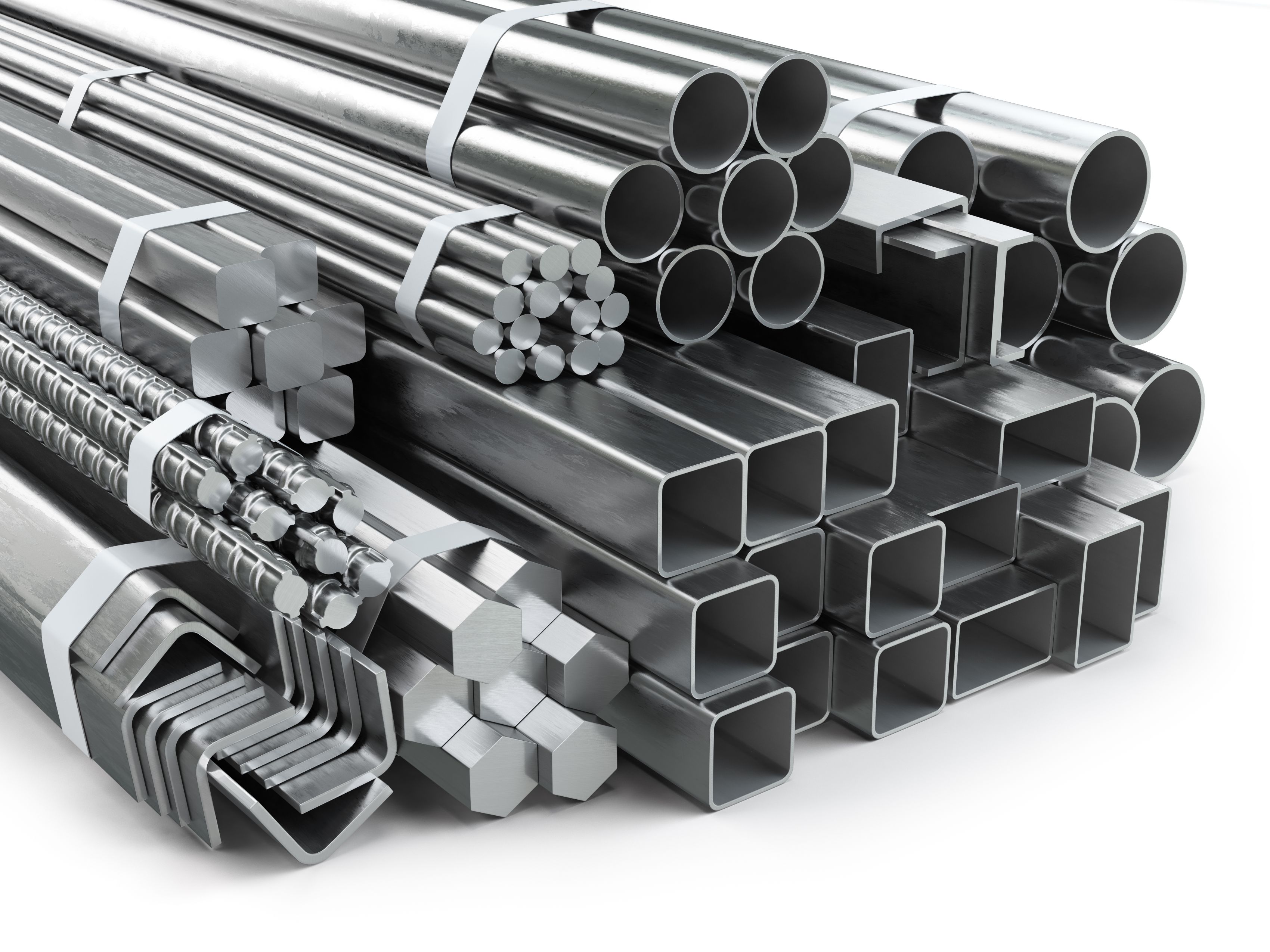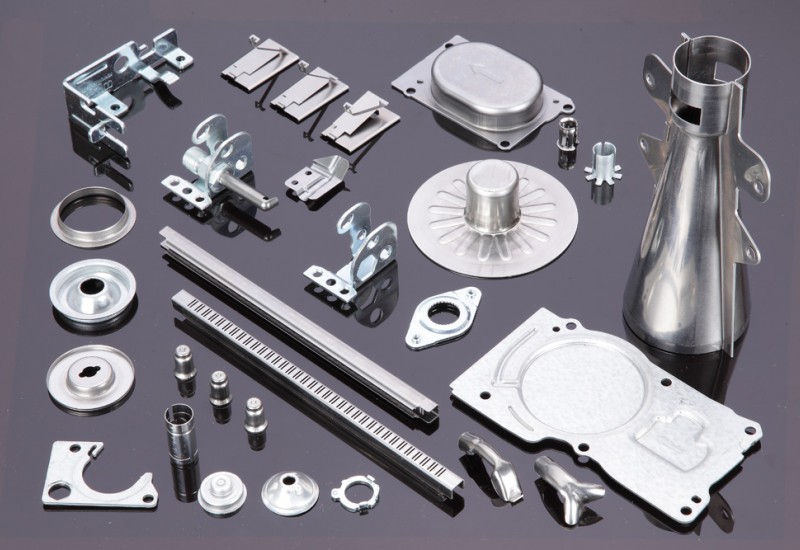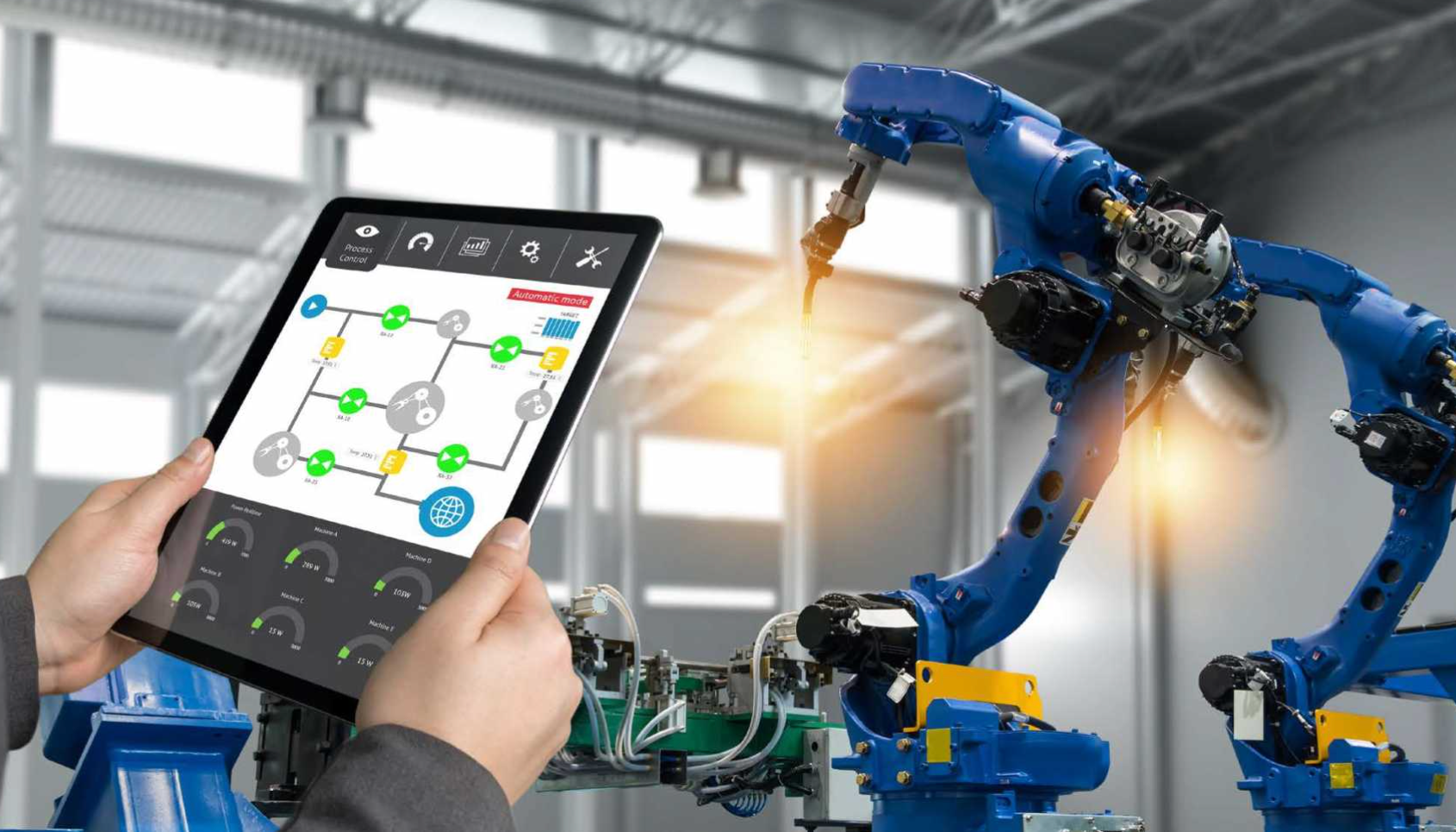When embarking on a new project, the choice of materials can be as critical as the design itself. Within the realm of metals, titanium and aluminum stand out as two of the most prominent players across various industries. My journey through the intricacies of these metals has led me to appreciate their unique properties, applications, and the importance of a detailed metal comparison.

Brief Overview of Titanium and Aluminum in Various Industries
Titanium, known for its lightweight nature and exceptional corrosion resistance, has become a staple in fields that demand both durability and performance. Its strength and resilience have made it indispensable in aerospace, medical implants, and even in the depths of the ocean within marine applications.
Aluminum, on the other hand, is celebrated for its economical value and its own form of corrosion resistance. Its versatility has led to widespread use in automotive, construction, and packaging industries. It's the go-to metal when cost-effectiveness and lightweight qualities are at the top of the requirements list.
Importance of Understanding Differences Between the Two Metals
Grasping the differences between titanium vs. aluminum is not just academic; it's practical. Knowing the material properties can significantly influence the production and manufacturing outcomes of your next project. Titanium's tensile strength and corrosion resistance are often weighed against aluminum's affordability and electrical conductivity. These characteristics can dictate the durability, robustness, and longevity of the final product.
Scope of the Article: What Readers Will Learn
In this comprehensive guide, I will delve into the properties and applications of both metals. You'll learn about:
● The mechanical properties, such as strength and density, and how they influence the machining and fabrication processes.
● Chemical properties that affect corrosion resistance and chemical stability.
● Thermal and electrical conductivity—vital attributes for applications requiring heat tolerance or electrical conductance.
● Cost comparisons to help you evaluate the price point of using titanium or aluminum in your projects.
● Real-world case studies that illustrate the practical implementation of each metal in various applications.
Expect to encounter tables comparing material properties, lists of applications where each metal excels, and quotes from industry experts that reinforce the qualities and features of titanium and aluminum. Whether you're involved in machining, fabrication, or simply choosing materials for a project, this guide aims to equip you with the knowledge to make informed decisions on titanium vs. aluminum.
Understanding the Basics
Titanium

Origin and Discovery
Titanium was discovered back in 1791 by a man named William Gregor. He found this new metal in Cornwall, England. A few years later, another scientist named Martin Heinrich Klaproth named it titanium after the Titans of Greek mythology. Pretty cool, right?
Physical and Chemical Properties
Now, let's talk about what makes titanium special. Titanium is known for its strength and lightweight properties. It's as strong as some steels but weighs about 45% less. That's like being super strong without having to be super big! It also doesn't rust or corrode easily, which means it doesn't wear out fast when it touches water or chemicals. This is called corrosion resistance.
Property | Description |
Density | Low, about 4.5 g/cm³ |
Strength | High, similar to steel |
Corrosion Resistance | Very high |
Heat Tolerance | Good, maintains strength at high temperatures |
Common Uses and Applications
You'll find titanium in lots of places because it's so useful. For your next project, you might use it because it's tough but not heavy. Here are some ways people use titanium:
● In airplanes and spacecraft because it's lightweight and can handle extreme temperatures.
● For medical implants like hip replacements since it's strong and doesn't react with our bodies.
● In sports equipment like golf clubs and bicycles for that mix of lightness and strength.
When thinking about titanium vs. aluminum, remember that titanium is often chosen for its higher strength and corrosion resistance, even though it might cost a bit more. In metal comparison, aluminum is more economical, but titanium offers better performance in harsh conditions.
So, when you're planning your project, and you need a metal that can take some hits and not weigh a ton, titanium might be your go-to material. Just remember, while it's not as cheap as aluminum, its qualities like corrosion resistance and durability can be worth the extra price.
Aluminum: A Versatile Metal

Origin and Discovery
Aluminum, a metal found in the Earth's crust, wasn't always as common as it is today. Long ago, people didn't even know it existed. In 1825, a man named Hans Christian Ørsted, a Danish chemist, was the first to produce aluminum, but it was an impure form. Later, a German chemist named Friedrich Wöhler improved the process. But the real game-changer was when Charles Martin Hall and Paul Héroult, independently of each other, discovered a way to make aluminum in large amounts. This process is still used today and it's called the Hall-Héroult process.
Physical and Chemical Properties
Aluminum is known for being lightweight. It has a density that's about one-third that of steel. This makes it a great material for things that need to be strong but not heavy. It's also got good electrical conductivity. Not as good as copper, but it's still used for electrical lines because it's lighter and more cost-effective.
One of the most important properties of aluminum is its corrosion resistance. It forms a thin layer of oxide on its surface that protects it from rust and decay. This is why it's often used in outdoor applications. When it comes to heat tolerance, aluminum can handle a fair amount of heat, but not as much as titanium.
Common Uses and Applications
So, where do we see aluminum used? Everywhere! From soda cans to airplanes, this metal is all around us. In construction, it's used for window frames and door frames because it's strong and doesn't rust easily. In transportation, car and plane makers love aluminum because it's lightweight and helps save on fuel. In packaging, it's used to keep food fresh because it's non-toxic and keeps out air and light.
In electronics, aluminum is used in phones and laptops because it can pull away unwanted heat. And let's not forget about power lines; they often use aluminum because it's a good conductor of electricity and it's lighter than copper, which means it's easier to hang up high.
When thinking about your next project, whether it's a school assignment or building something cool, remember that aluminum might just be the perfect material for the job. It's economical, has good mechanical properties, and is widely available. Plus, it's environmentally friendly because it's recyclable.
Comparative Analysis of Physical and Mechanical Properties
When embarking on a project that involves the selection of metals, understanding the physical and mechanical properties of the materials at hand is crucial. Let's delve into a comparative analysis of two widely used metals: titanium and aluminum.
Physical Properties
Density and Weight Comparisons
● Titanium: With a density of 4.506 g/cm³, titanium boasts a low density for a metal, yet it maintains high strength. This lightweight nature makes it ideal for applications where reducing weight is essential without sacrificing robustness.
● Aluminum: Even lighter, aluminum has a density of approximately 2.7 g/cm³. Its mass per unit volume is about half that of titanium, which explains its popularity in industries where heaviness is a critical factor.
Color and Appearance
● Titanium: Exhibits a silvery color and can be anodized to produce various colors, enhancing its aesthetic appeal.
● Aluminum: Naturally has a silvery-white appearance and is often anodized or coated for improved surface properties and visual effect.
Malleability and Ductility
● Titanium: While it is less malleable than aluminum, titanium's ductility allows it to be drawn into wires or made into sheets without losing durability.
● Aluminum: Known for its excellent malleability and ductility, aluminum can be easily formed into various shapes, which is beneficial in manufacturing and fabrication processes.
Mechanical Properties
Strength and Durability
● Titanium: Renowned for its strength and corrosion resistance, titanium is often the material of choice for applications requiring longevity and resilience to environmental factors.
● Aluminum: Although not as strong as titanium, aluminum's strength can be significantly increased through alloying and heat treatment processes.
Elasticity and Hardness
● Titanium: Possesses a greater hardness than aluminum and maintains a high level of elasticity, which allows it to return to its original shape after bending.
● Aluminum: Generally softer than titanium, but its hardness can be enhanced through various treatments, making it suitable for a wide range of applications.
Tensile and Yield Strength
● Titanium: Exhibits a higher tensile strength (ranging from 434 to 1,200 MPa) and yield strength than aluminum, indicating its ability to withstand significant stress before deforming.
● Aluminum: Has a lower tensile strength (around 90 to 690 MPa), but with the right alloying elements, its yield strength can be increased, making it a cost-effective option for less demanding applications.
In the realm of metal comparison, especially when considering titanium vs. aluminum, it's evident that each metal has its own set of characteristics, properties, and applications. The choice between aluminum vs titanium hinges on the specific requirements of your next project. Whether you prioritize lightweight design, corrosion resistance, strength, or cost-effectiveness, both metals offer unique advantages.
For instance, in the aerospace industry, where strength and lightweight characteristics are paramount, titanium's properties make it an excellent choice despite its higher price point. On the other hand, aluminum's economical cost and good corrosion resistance make it a go-to for automotive applications where budget constraints are a significant consideration.
When it comes to machining and fabrication, both metals have their quirks. Titanium requires more advanced machining processes due to its strength and hardness, while aluminum is generally easier to work with, allowing for more straightforward production and manufacturing.
Chemical and Thermal Properties
When it comes to titanium vs. aluminum, understanding their chemical and thermal properties is crucial for determining their suitability for your next project. Let's delve into the specifics of these properties.
Chemical Properties
Corrosion Resistance
One of the standout features of titanium is its exceptional corrosion resistance. This metal forms a passive oxide layer that shields the material from a range of corrosive environments. In contrast, aluminum also exhibits corrosion resistance, primarily due to its ability to form a protective oxide coating. However, in certain conditions, especially where chloride is present, titanium's corrosion resistance is superior.
Reactivity with Other Elements and Compounds
Both metals show distinct reactivity profiles. Titanium reacts with elements and compounds at high temperatures, forming carbides and nitrides, which can enhance the material's strength. On the other hand, aluminum can react with certain chemicals, such as acids and bases, but its reactivity is generally less aggressive than that of titanium.
Oxidation Behavior
The oxidation behavior of a material is a key characteristic. Titanium oxidizes slowly due to its strong affinity for oxygen, which contributes to its corrosion resistance. Aluminum, while it oxidizes quickly upon exposure to air, forms a self-protecting oxide layer that prevents further oxidation, thus maintaining its integrity.
Thermal Properties
Melting Points
When considering melting points for metal comparison, titanium has a significantly higher melting point (1668°C or 3034°F) compared to aluminum (660.3°C or 1220.5°F). This makes titanium more suitable for high-temperature applications.
Thermal Conductivity
Thermal conductivity is a vital property for materials used in heat exchange applications. Aluminum is known for its high thermal conductivity, which is why it's widely used in heat sinks and cooling systems. Titanium, while having lower thermal conductivity, is still adequate for many applications where heat transfer is a factor.
Coefficient of Thermal Expansion
The coefficient of thermal expansion describes how the size of a material changes with temperature. Aluminum exhibits a higher coefficient compared to titanium, meaning it expands more when heated. This property is critical in applications where precise tolerances are required over a range of temperatures.
Advantages and Disadvantages in Various Contexts

Advantages of Titanium
When it comes to titanium vs. aluminum, titanium stands out for its superior strength-to-weight ratio. This means that titanium offers remarkable strength while remaining incredibly lightweight. It's a go-to metal for applications where weight is a critical factor but robustness cannot be compromised.
Another key feature is exceptional corrosion resistance. Titanium is virtually immune to corrosion by seawater and chlorine, making it a prime choice for marine and chemical applications. Its corrosion resistance ensures longevity and reliability in harsh environments.
Moreover, titanium's biocompatibility makes it a preferred material in the medical field. It doesn't react with the human body, which is why it's used for medical implants and prosthetics. This property amplifies titanium's applications in sectors where health and safety are paramount.
Advantages of Aluminum
Aluminum shines with its lightweight nature. It's about one-third the weight of steel, which makes it an attractive option for automotive and aerospace industries looking to improve fuel efficiency. This lightweight property is essential in applications where every gram counts.
Its abundance and lower cost make aluminum a more accessible material. When considering price, aluminum is more cost-effective than titanium, making it suitable for a wide range of projects and manufacturing needs.
Recyclability is another of aluminum's strong suits. Aluminum can be recycled repeatedly without losing its properties, reducing the environmental impact and further lowering production costs.
Disadvantages of Titanium
The higher cost of titanium is a significant disadvantage. When comparing titanium vs. aluminum on a price point, titanium is often the more expensive option, which can be a limiting factor for budget-conscious projects.
Machining complexity is another hurdle. Titanium's strength can be a double-edged sword, as it requires special machining processes and tools, adding to the production costs and complexity.
Limited availability can also be challenging. While it's the ninth most abundant element on Earth, its properties make it difficult to extract and process, leading to less availability than more common metals like aluminum.
Disadvantages of Aluminum
Compared to titanium, aluminum has a lower strength-to-weight ratio. While it is a lightweight metal, it may not always provide the necessary strength or durability for high-stress applications.
Susceptibility to corrosion is a notable drawback. Despite its natural oxide layer that offers some corrosion resistance, aluminum can still suffer corrosion, especially when exposed to certain chemicals or environments.
Lastly, aluminum's potential for fatigue failure cannot be overlooked. In cyclic loading conditions, aluminum might not endure as well as titanium, which could lead to structural failures over time. This is a crucial consideration in applications where durability and robustness are critical.
Industry-Specific Applications and Case Studies

Aerospace and Aviation
In the realm of aerospace and aviation, the battle of titanium vs. aluminum is particularly significant. Both metals have a storied history in the sector, but let's zoom in on their roles.
● Use in Aircraft Structures and Engines Titanium's strength and corrosion resistance make it indispensable for aircraft structures and engines. Its lightweight yet robust nature ensures that it can endure the high-stress environments of flight without succumbing to wear. For instance, the Boeing 787 Dreamliner uses titanium extensively in its engines and airframe, capitalizing on its material properties to enhance performance and safety.
● Performance in High-Stress Environments Case studies have shown that aluminum, with its impressive strength-to-weight ratio, is also a powerhouse in aerospace. Its heat tolerance and electrical conductivity make it suitable for various applications within aircraft. However, when it comes to resistance to fatigue and crack propagation, titanium often outperforms aluminum, especially in critical, high-stress parts of the aircraft.
Automotive Industry
The automotive industry has seen a shift in material selection as manufacturers strive for efficiency and performance.
● Role in Vehicle Weight Reduction The use of aluminum in automotive manufacturing has skyrocketed due to its ability to reduce vehicle weight significantly. This lightweight metal's density is about one-third that of steel, making it an attractive option for your next project if you're aiming to cut down on mass without sacrificing strength.
● Impact on Fuel Efficiency A lighter vehicle inherently requires less energy to move, which translates into better fuel efficiency. Studies have shown that for every 10% reduction in vehicle weight, there is a 5-7% reduction in fuel consumption. By incorporating aluminum into the design, cars not only become more cost-effective to operate but also contribute to lower carbon emissions.
Medical Devices
Both titanium and aluminum have found their niche in the field of medical devices due to their unique properties.
● Titanium in Surgical Implants The corrosion resistance and biocompatibility of titanium make it a prime choice for surgical implants. Its mechanical properties, including its tensile strength, allow it to withstand the rigors of the human body. For example, titanium is commonly used in joint replacements and bone screws, showcasing its durability and potency in medical applications.
● Aluminum in Medical Equipment On the other hand, aluminum's lightweight and cost-effective nature make it ideal for medical equipment like wheelchairs and hospital bed frames. Its ease of machining and fabrication ensures that manufacturing these items is both efficient and economical.
Consumer Electronics
The consumer electronics industry often features the titanium vs. aluminum debate when it comes to design decisions.
● Use in Smartphones and Laptops The sleek and modern aesthetics of today's smartphones and laptops are often courtesy of aluminum. Its lightweight and durability are key in these applications, where portability is paramount. For instance, Apple's MacBook Air utilizes an aluminum enclosure for a blend of elegance and robustness.
● Impact on Design and Durability Titanium, while less common due to its price point, offers a higher-end feel and improved corrosion resistance. Its mechanical strength and resistance qualities can be observed in premium smartphones, which often boast of titanium frames for enhanced durability and resilience.
In each of these industries, the metal comparison of aluminum vs titanium hinges on balancing cost, properties, and the specific applications at hand. Whether it's the strength and corrosion resistance of titanium or the economical and lightweight nature of aluminum, the decision often boils down to the project requirements and desired material characteristics.
Environmental Impact and Sustainability Considerations
When we delve into the realms of titanium vs. aluminum, it's crucial to consider the environmental impact and sustainability of these metals. Both have their unique characteristics that influence their production, manufacturing, and end-of-life stages.
Mining and Extraction Processes
Mining is the first step in the life cycle of both titanium and aluminum. For titanium, the process usually involves the extraction of titanium dioxide from minerals such as ilmenite or rutile. The Kroll process, which is energy-intensive, is then used to convert the oxide into the metal.
● Titanium: Known for its strength and corrosion resistance, the extraction of titanium ore can be environmentally taxing. It often involves strip mining, which can lead to habitat destruction and soil erosion.
● Aluminum: On the other hand, aluminum is extracted from bauxite ore using the Bayer process, followed by the Hall-Héroult process. While bauxite mining can disrupt ecosystems, aluminum's lightweight nature and corrosion resistance make it a popular choice for various applications.
Energy Consumption in Production
The energy consumption in the production of these metals is a significant factor in their environmental footprint.
● Titanium production is recognized for its high energy requirements due to the high temperatures and reactive nature of the metal, which necessitates special handling and machining processes.
● In contrast, aluminum production is more energy-intensive than titanium when considering the entire process from mining to refinement. However, aluminum's electrical conductivity and thermal conductivity make it invaluable in electrical applications.
Recycling and End-of-Life Aspects
Recycling plays a pivotal role in the sustainability of metals. The end-of-life phase for both titanium and aluminum offers opportunities for reducing environmental impact.
● Titanium: While not as widely recycled as aluminum, titanium can be reclaimed and reused, which is critical given its robustness and corrosion resistance. The aerospace industry, for instance, has developed efficient ways to recycle titanium, minimizing waste during fabrication.
● Aluminum is one of the most recycled materials due to its cost-effectiveness and affordability. It retains its properties after recycling, which means it can be repurposed for the same applications without loss of quality or performance.
● Fact: Recycling aluminum saves approximately 95% of the energy required to produce it from raw materials.
Both metals have their place in modern manufacturing, with titanium often being chosen for its superior mechanical properties and corrosion resistance, while aluminum is favored for its lightweight qualities and economic advantages. As we consider our next project, understanding the environmental impact and sustainability considerations of our material choices is paramount. Whether it's titanium with its impressive strength-to-density ratio or aluminum with its versatility and heat tolerance, each metal brings a unique set of attributes to the table. By focusing on recycling and responsible end-of-life management, we can help mitigate the environmental effects of these essential materials.
Cost Analysis and Budget Considerations
When embarking on a project involving metals, understanding the financial implications is critical. Let's delve into the cost analysis and budget considerations for titanium vs. aluminum.

Raw Material Costs
● Titanium: Known for its strength and corrosion resistance, titanium is a premium metal. Its properties make it an ideal choice for demanding applications. However, these features come at a higher price point. The cost of raw titanium can be significantly more than aluminum, influenced by its potency and robustness.
● Aluminum: This metal is celebrated for its lightweight nature and good corrosion resistance. Aluminum is more abundant and easier to extract, making it a more cost-effective option. When comparing aluminum vs titanium, aluminum often wins in terms of affordability.
Manufacturing and Processing Expenses
● Machining Processes: Both metals have different machining requirements. Titanium's density and strength can lead to higher tool wear and slower machining speeds, increasing production costs. In contrast, aluminum's lightweight and softer nature make it easier to machine, often resulting in lower fabrication expenses.
● Fabrication: The manufacturing of titanium components can be more complex due to its mechanical properties. Specialized equipment or techniques might be necessary, adding to the expense. Aluminum's machinability and thermal conductivity allow for more straightforward and less costly fabrication.
Long-Term Maintenance and Replacement Costs
● Durability and Lifespan: Titanium's corrosion resistance and strength can lead to longer lifespans, potentially offsetting its initial higher cost with reduced maintenance and replacement costs. Aluminum, while also resistant to corrosion, may have a shorter lifespan in more demanding applications, leading to more frequent replacements.
● Maintenance: The chemical properties of titanium ensure minimal maintenance, whereas aluminum may require protective coatings or treatments to enhance its corrosion resistance and durability.
When considering your next project, it's essential to weigh these financial factors. A metal comparison of titanium vs. aluminum reveals that while titanium has superior qualities, its cost might not be justified for every application. Conversely, aluminum offers a more economical solution with a balance of lightweight attributes and resistance features.
To illustrate, let's look at a case study: a manufacturer choosing between titanium and aluminum for an aerospace component. The initial raw material costs for titanium were 35% higher than aluminum. However, the long-term maintenance data suggested that titanium components required 50% less frequent replacement. This case study emphasizes the importance of looking beyond upfront costs to consider the total lifecycle expenses.
Aesthetic Considerations and Surface Treatments
When embarking on a project involving metals, the visual appeal and surface appearance of the final product are of paramount importance. This is where the titanium vs. aluminum debate often extends beyond mere material properties and delves into the realm of aesthetics.
Visual Appeal and Surface Appearance
Titanium, known for its lightweight and corrosion-resistant qualities, boasts a lustrous, silver finish that exudes a high-tech and clean look. Its properties lend a sense of strength and durability to the design, making it a preferred choice for applications where both performance and aesthetics are critical.
On the other hand, aluminum is often celebrated for its smooth and economical finish. It can be polished to a high sheen or textured to suit the design needs, reflecting its versatility. With its own form of corrosion resistance and the ability to take on various anodized colors, aluminum offers a wide range of aesthetic choices for projects.
Surface Treatment Options
● Anodizing: This electrochemical process thickens the oxide layer on metals, enhancing corrosion resistance and wear. It's particularly popular for aluminum, allowing for color customization.
● Powder Coating: A dry coating method that provides a thick, even layer of protection and is available in a myriad of colors and finishes.
● Painting: Traditional yet effective, painting offers endless color options and can be tailored to specific project requirements.
● Polishing: Both metals can be polished to achieve a mirror-like finish, highlighting their aesthetic attributes.
Making Aesthetic Choices for Projects
When deciding between titanium and aluminum for your next project, consider the applications and the environment in which the metal will be used. For instance, if the project demands a combination of lightweight characteristics and corrosion resistance, titanium might be the way to go. However, if cost-effectiveness and ease of machining are higher on the priority list, aluminum could be more suitable.
It's also important to weigh the visual impact of your choice. If the end product is part of a larger assembly where strength and robustness are visually important, the innate qualities of titanium could be more appealing. Conversely, for consumer products where price point and color variety are critical, aluminum's properties might make it the better candidate.
When making these decisions, always refer to case studies and industry examples to understand how similar choices have panned out in real-world applications. Look for quotes from industry experts on the material properties and how they've influenced the aesthetic outcomes of various projects.
Conclusion
As we wrap up our comprehensive guide, let's revisit the key differences and similarities between titanium and aluminum. Both metals boast a reputation for their lightweight nature and corrosion resistance, making them highly sought after in various industries. Titanium stands out for its exceptional strength and corrosion resistance, while aluminum is known for its economical price point and good conductivity properties.
When it comes to density, titanium is denser with a higher mass per unit volume compared to aluminum. However, this doesn't detract from its status as a lightweight metal when compared to other options like steel. Aluminum, on the other hand, offers a unique blend of lightness and strength—though not as robust as titanium, it still holds its own in numerous applications.
Regarding heat tolerance, titanium showcases superior thermal tolerance and temperature endurance, making it a reliable choice for high-temperature environments. Aluminum, while having decent heat resistance, doesn't quite match up to titanium in this regard.
In terms of electrical conductivity, aluminum clearly takes the lead, offering better conductivity which is essential in electrical applications. Titanium's electrical properties are less impressive, but that's often a non-issue given its typical applications.
Final Recommendations for Choosing Between Titanium and Aluminum
When deciding between titanium vs. aluminum for your next project, consider the following:
● Strength and Durability: If your project demands the utmost in strength and durability, titanium may be the way to go.
● Cost-Effectiveness: For those on a tighter budget or where cost is a significant factor, aluminum provides a more affordable option.
● Electrical and Thermal Properties: If your application requires high electrical conductivity or moderate thermal resistance, aluminum should be your metal of choice.
● Weight Considerations: Both metals are champions of lightweight design, but if every gram counts, aluminum's lower density could be beneficial.
Encouraging Continued Learning and Industry Engagement
The world of metals is ever-evolving, with advancements in machining, fabrication, and manufacturing processes constantly emerging. It's crucial to engage with the industry and continue learning about the properties, characteristics, and new applications of metals like titanium and aluminum.
By staying informed, you can make educated decisions that optimize the performance, cost, and efficiency of your manufacturing projects. Whether you're an engineer, a designer, or a manufacturer, understanding the intricate qualities of these metals can lead to innovations that push your work to the next level.
Remember, the choice between titanium and aluminum isn't just about comparing material properties; it's about aligning those properties with the specific needs of your project. Consider not just the cost and material characteristics, but also the long-term applications and benefits. Through careful consideration and industry engagement, you'll be well-equipped to select the ideal metal for your next project.
FAQ
Q: What are the key differences between titanium and aluminum?
A: Titanium is denser, stronger, and more corrosion-resistant. Aluminum is lighter, more conductive, and cheaper.
Q: Why is titanium more expensive than aluminum?
A: Titanium's extraction and processing are more complex and energy-intensive, driving up costs.
Q: Can aluminum be as strong as titanium?
A: Aluminum is typically weaker, but alloys can improve strength, not equalling titanium.
Q: How do titanium and aluminum compare in terms of environmental impact?
A: Titanium's processing is more energy-intensive, often leading to greater environmental impact.
Q: Which industries prefer titanium over aluminum and why?
A: Aerospace and medical industries prefer titanium for its strength and biocompatibility.
Q: Are titanium and aluminum recyclable?
A: Both metals are highly recyclable, retaining properties after recycling.
Q: How does the weight of titanium compare to aluminum in applications?
A: Titanium is heavier, but strength-to-weight ratio often justifies use in specific applications.


















